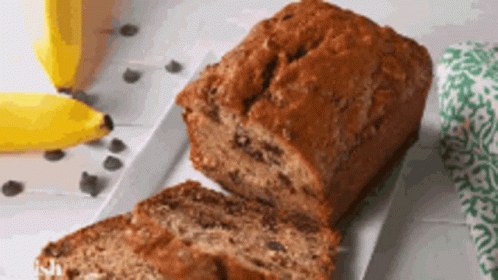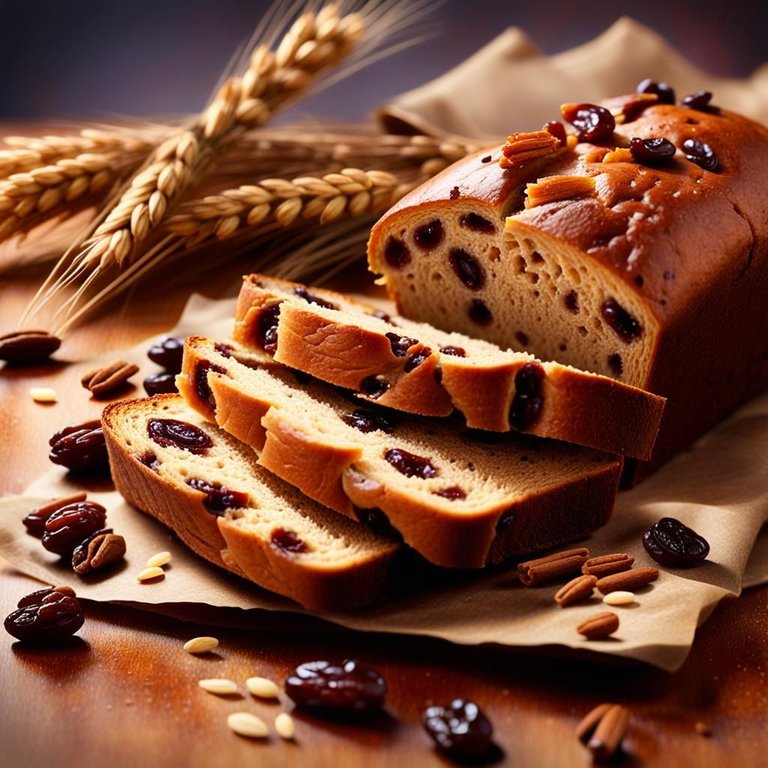
Image's Source - Fuente de la Imagen
Image generated in NightStudio - Imagen generada en NightStudio

Spanish Version Bellow
Changing the subject, and continuing a bit with my offline life, the weather has been light rain, and that has caused some minor inconveniences. I like the rain a bit, and I know that it is necessary, what happens is that I tend to have joint pain in rainy weather, and it also happens that the services fail a bit (electricity and internet). I am very happy that the failures were not serious, and I was able to work.
There is not much more to tell about my life, personally, so I am going to comment on a #food anniversary that brought back memories today. Today is Cinnamon Raisin Bread Day.
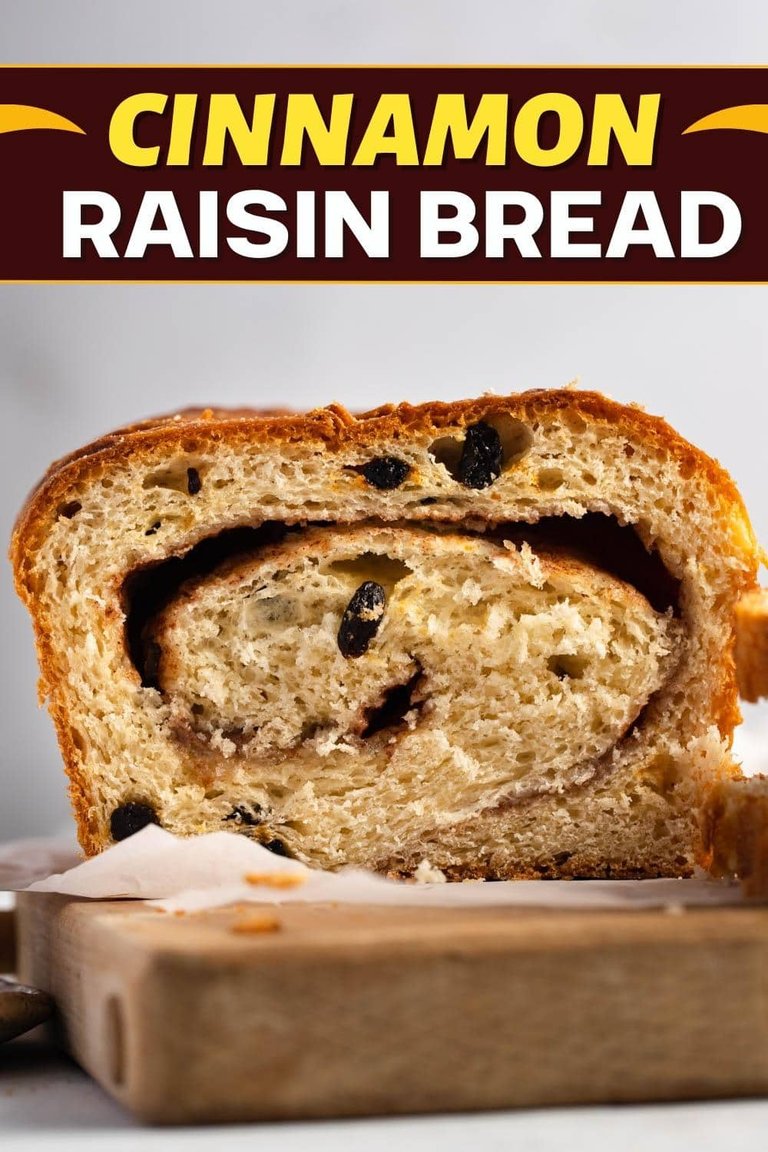
Image's Source - Fuente de la Imagen
So why did I choose to talk about this celebration in my daily post?
The answer to this is a personal memory, before I comment on that, let me tell you a little about this bread.
The #CinnamonRaisinBread is celebrated in the United States, as a National Day, and the recipe for this bread seems to come from different roots. It can be said that the bread that is celebrated today descends from other types of breads, such as: the Italian Panettone, the Russian Kulich, the German Stollen (fruit bread with spices and candied fruits)
I get the idea that the emigrants who arrived in the United States over the centuries, developed this recipe as a sum of their traditions, or it may have been a way to reconstruct their own traditional bread. Although a friend already told me that this bread was popular in England in the 19th century, so it may be that the recipe that is celebrated in the United States originates from there.
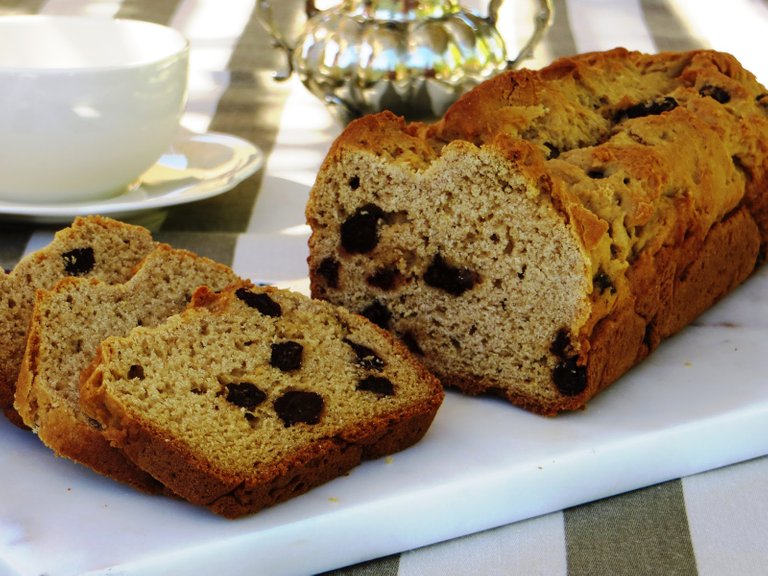
Image's Source - Fuente de la Imagen
For many years, I lived with an elderly aunt, who had some health complications since her youth. So she used to eat foods that were not so common in the diet of the people around me. Among these foods, which I found peculiar, were some types of bread that I rarely saw anywhere else.
One of the breads that my aunt used to eat was the whole wheat type, or breads with multi-grains added, that is how I came to know about cinnamon raisin bread. It turns out that this bread has a slightly different texture than the white bread that we usually eat. It is a type of bread without kneading, and the crumb is very dense, it seems to me that it does not rise much, and that leads me to think that its recipe may be low in leavening agents.
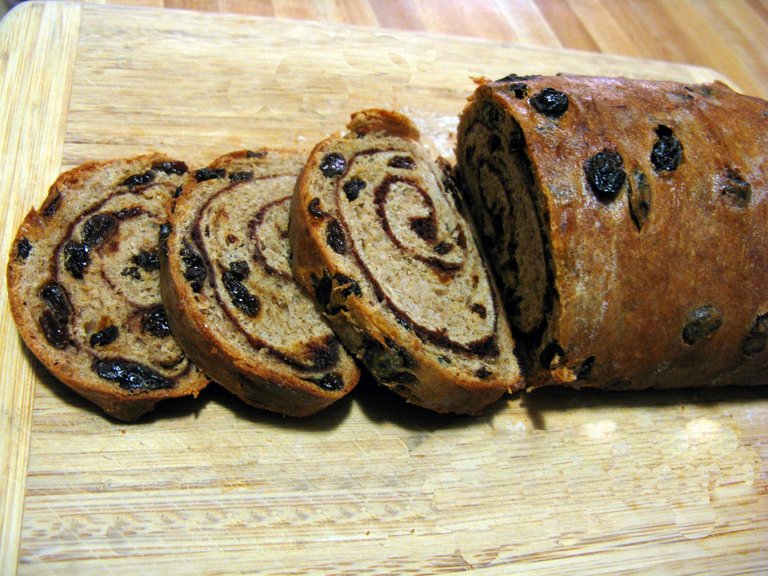
Image's Source - Fuente de la Imagen
Well, that will be all for today, I am saying goodbye, hoping that you are well, that you have good food (and good memories), and that we can meet again another time.

Versión en Inglés arriba
Cambiando de tema, y siguiendo un poco con mi vida fuera de línea, el clima ha sido de lluvias ligeras, y eso ha planteado algunas molestias menores. Me agrada un tanto la lluvia, y sé que es necesaria, lo que pasa es que tiendo a tener dolor articular en el clima de lluvia, y también pasa que los servicios fallan un poco (electricidad e internet). Me alegra mucho que las fallas no fueron graves y pude trabajar.
No hay mucho más que contar de mi vida, en lo personal, así que voy a comentar sobre una efeméride de #comida que me trajo recuerdos hoy. Hoy es el Día del Pan de Canela y Pasa.

Image's Source - Fuente de la Imagen
Así que ¿por qué elegí hablar de esta celebración en mi post diario?
La respuesta a esto es un recuerdo personal, antes de comentar acerca de eso, déjame que cuente un poco acerca de este pan.
El #Pan de Canela y Pasas se celebra es en Estados Unidos, como un Día Nacional, y la receta de este pan parece provenir de distintas raíces. Se puede decir que el pan que se celebra hoy desciende de otros tipos de panes, como: el Panettone italiano, el Kulich ruso, el Stollen alemán (pan de frutas con especias y frutas confitadas)
Me hago a la idea de que los emigrantes que llegaron a lo largo de los siglos a Estados Unidos, desarrollaron esta receta como una suma de sus tradiciones, o puede que fuera una manera de reconstruir su propio pan tradicional. Aunque ya me corrió un amigo con que este pan era popular en Inglaterra en el siglo XIX, así que puede que de allí es que se origine la receta que se celebra en Estados Unidos.

Image's Source - Fuente de la Imagen
Durante muchos años, viví con una tía mayor, que tenía algunas complicaciones de salud desde su juventud. Así que ella solía consumir alimentos que no eran tan frecuentes en la dieta de las personas a mi alrededor. Entre estos alimentos, que yo encontraba peculiares, estaban algunos tipos de pan que rara vez veía en otro lado.
Uno de los panes que mi tía solía consumir eran del tipo integral, o panes con multi-granos agregados, así fue como llegué a conocer el pan con pasas y canela. Resulta que este pan tiene una textura un poco distinta al pan blanco que solemos comer. Es un tipo de pan sin amasado, y la miga es muy densa, me parece que no levanta mucho, y eso me lleva a pensar que su receta puede que sea baje en leudantes.

Image's Source - Fuente de la Imagen
Bueno, será todo por hoy, ya me despido, deseándote que tú estés bien, que tengas buena comida (y buenos recuerdos), y que nos podamos leer de nuevo en otra oportunidad.

This challenge is an initiative of @flaxz
The 4 points to join the #IAmAliveChallenge, includes using the hashtag #alive to post to We Are Alive Tribe and earn ALIVE tokens.
Este desafío es iniciativa de @flaxz
Los 4 puntos para unirte al #IAmAliveChallenge, incluyen el uso de la etiqueta #alive para publicar en We Are Alive Tribe y ganar tokens ALIVE.

